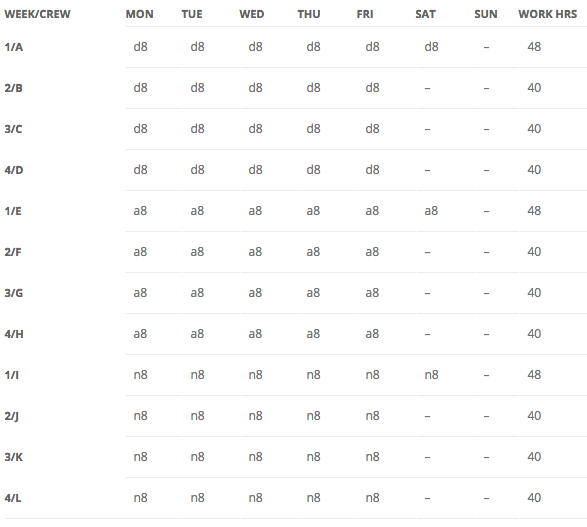In our last schedule topic, we discussed high overtime levels. This time we will discuss how the overtime is distributed to employees. To do this, it is helpful to break the overtime into two categories: (1) desirable (e.g., overtime that occurs on weekdays), and (2) undesirable (e.g., overtime on the weekend).
Desirable Overtime
When the overtime is seen as desirable, volunteers will be plentiful. If the number of volunteers exceeds the requirements, the organization will have to decide how to narrow the list. Many organizations rely on seniority to do this. This means the most senior employees will get all the desirable overtime.
An alternative approach is to use this as an opportunity to reward employees for something they’ve done, such as good attendance, superior work performance, etc. The selection criteria should be clearly spelled out in advance to avoid the perception that management is playing favorites.
Undesirable Overtime
When the overtime is seen as undesirable, there will be fewer volunteers. Some organizations may develop an overtime schedule so that the responsibility rotates and everyone is treated fairly. An example is shown below:
Example 8-hour Schedule

The crew on each shift is split into four smaller groups. Sub-crew A starts the schedule in Week 1. They work their normal workweek plus 8 hours of overtime on Saturday. When they finish the first week, they move down to the second week of the schedule, and so on. Once they complete the fourth week, they start over in Week 1. This means that one sub-group will be available for overtime once every four weeks. If more than one sub-crew is needed every week, Saturday shifts can be added to the second and subsequent weeks as necessary. The advantage of this approach is that employees know in advance when they are likely to be called in and all employees are treated the same. This approach does not work well if the amount of overtime varies from week to week.
A more common approach is to use seniority to decide who works the weekend overtime. This means the least senior employees will get all the undesirable overtime, which in turn can lead to higher absence rates and greater turnover among these newer employees. Here is what one of our clients did to tackle this problem.
Case Study
Our business analysis indicated that considerable productivity improvement could be realized if most of the operation changed from its current production pattern (high production on weekdays and limited production on weekends) to moderate, steady production seven days a week.
An employee survey found that their primary needs were:
- Predictability
- Choice in the type of schedule they worked
- Reasonable time off to spend with their families
After reviewing the results of the business analysis and employee survey, two schedules were implemented. One was a traditional 5-day schedule using 8-hour shifts. The second was a 7-day shift schedule using 12-hour shifts.
Half of the employees were assigned to the new 7-day schedule. They were protected from working a scheduled weekend off. They also received about 10% more income and 78 more days off than those on the 5-day schedule.
The company had no problem filling the employee positions on the 7-day schedule. The increased predictability, income and number of days off actually made the 7-day schedule more popular than the 5-day schedule.
After six months on the new schedule, the workforce was surveyed again to provide a “before and after” picture. Using indices to measure performance, the improvements are shown below:
- Communication: +5.5%
- Management’s openness to workforce input: +13.8%
- Employees feeling that they are a part of the company: +11.9%
- The general quality of the work environment: +21.1%
- Facility rating relative to other companies in the area: +21.2%
- Schedule predictability: +40.6%
- Schedule flexibility: +47.5%
As you can see, the employees were really happy with the new schedule and the changes in overtime. They now rated the company and the work environment much higher than they had before the new schedule was implemented.
But the employees were not the only ones to benefit from the change. The company had reduced its employee turnover by more than 50%.
Call Us and We Can Help
Call or text us today at (415) 763-5005 to discuss your operations and how we can help you solve your shift work problems. You can also complete our contact form and we will call you.

